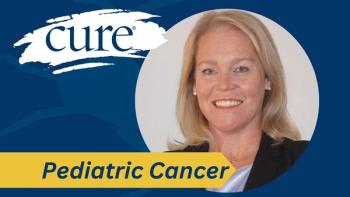
New Treatment Options Emerging Across Lung Cancer Subtypes
Both non-small lung cancer and small cell lung cancer is a disease that now has various therapeutic options available, according to experts.
Lung cancer is a disease that now has various therapeutic options available, especially following data read outs at the 2025 ASCO Annual Meeting, according to Dr. Joshua K. Sabari and Dr. Prantesh Jain. The pair sat down for a conversation, hosted by Sabari, to delve into patient outcomes in the realm of both small cell and non-small cell lung cancer following the meeting.
"SCLC is such a recalcitrant disease, so it's exciting to see so many hopeful therapeutic options now available," Sabari emphasized.
Focusing now on non-small cell lung cancer, a study that Jain highlighted was the REZILIENT-1 study for patients with EGFR Exon 20 insertion mutation non-small cell lung cancer — a notoriously difficult to treat subpopulation of patients with this disease.
“Just to give you context, although EGFR Exon 20 mutated non-small cell lung cancer comprises around 1% to 2% of cases, these cancers are generally resistant to first- and second-generation TKIs and also do not have a good response to any immunotherapy combinations,” Jain explained.
The phase 1/2 REZILIENT-1 trial is investigating treatment with zipalertinib, an oral EGFR TKI with central nervous system penetration. The study has enrolled 244 patients with advanced non-small cell lung cancer harboring these mutations. For patients with brain metastases who were treated with the investigative therapeutic approach on this study, approximately 31% of those saw a response rate. Moreover, the safety profile was acceptable.
"EGFR Exon 20 is an uncommon or rare space, affecting about 1% of patients, but it's very important to have more oral therapeutics available for our patients," Sabari noted.
The pair concluded their conversation by discussing the ADAURA trial, which investigated neoadjuvant treatment in patients with non-small cell lung cancer.
Based on the ADAURA trial outcomes, Jain said that, “This is a feasible option, especially for downstaging patients with N2 disease, which is a really challenging space for surgical resectability and overall outcome. What needs to be seen is the percentage of nodal clearance after the neoadjuvant treatment to understand the exact contribution of this neoadjuvant addition to [treatment] given before surgery…”
Sabari is the editor in chief of CURE. He also serves as an assistant professor in the Department of Medicine at NYU Grossman School of Medicine and director of High Reliability Organization Initiatives at Perlmutter Cancer Center.
Jain is a medical oncologist at Roswell Park Comprehensive Cancer Center, in Buffalo, New York, where he also serves as an assistant professor of Oncology in the Department of Medicine. He also works at the State University of New York at Buffalo as a clinical assistant professor.
For more news on cancer updates, research and education,




